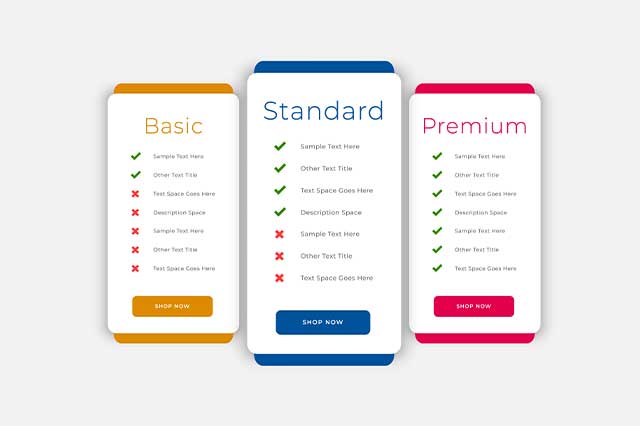You might be comparing and contrasting Asana vs Smartsheet wondering which tool can work best for your team. Managing projects is daunting, particularly when you need to track deadlines, projects, and team members. Project management tools make this process simple. Tools like Smartsheet and Asana can improve how you manage projects. Yet, you must think about your needs and how much you can afford to spend on them to choose the right one. Below, we compare and contrast Asana vs Smartsheet so that you can know which one to select.
Feature comparison
It is vital to compare Asana vs Smartsheet as you look for leading project management software. Asana is a work management tool that provides intuitive collaboration features, while Smartsheet offers robust automation and customizable views. Therefore, you can consider Asana as a flexible, simple project management tool, while Smartsheet is a data-centric tool that offers more than Google Sheets does. It excels in shareability, flexibility, dashboards, and reporting. Its flexible views and spreadsheet-like interface are familiar. With it, you can better manage, track, and collaborate on projects of every size. The following table compares Asana vs Smartsheet regarding flexible work management, project management, and collaboration
| Project Management | Asana | Smartsheet |
| Gantt View | Yes | Yes |
| Calendar View | Yes | Yes |
| Card View / Kanban Board | Yes | Yes |
| Task Dependencies | Yes | Yes |
| Baselines | No | Yes |
| Critical path | No | Yes |
| Reminders | Yes | Yes |
| Flexible Work Management | Asana | Smartsheet |
| Create Custom Fields | Yes | Yes |
| Conditional formatting | Yes | Yes |
| Multi-level Sort | No | Yes |
| External website content in dashboards | No | Yes |
| 50 plus Formula functions | No | Yes |
| Collaboration | Asana | Smartsheet |
| Publish | Yes | Yes |
| Share with external and internal collaborators | Yes | Yes |
| File attachments | Yes | Yes |
| Notifications | Yes | Yes |
| Dynamic View Request Forms | No | Yes |
| Automated Update Requests | No | Yes |
| Change History | Yes | Yes |
| Comments and @mentions | Yes | Yes |
Asana vs Smartsheet: cost

Asana has three plans in addition to an Enterprise plan. Asana offers a Basic plan that is free for up to fifteen users. Its premium plan costs $10.99 per user each month when billed yearly. If you prefer paying the monthly subscription plan, it costs $13.49. Its business plan costs $24.99 monthly per user when billed yearly and $30.49 monthly. Non-profit organizations can obtain a 50% discount on the tool’s paid plans.
Smartsheet provides a free plan forever but only for a single user and up to 2 sheets. If you wish to try out additional features, you may do so through a free thirty-day trial. Users who sign up for Smartsheet’s paid plans pay at least $7 per user monthly when the amount is billed yearly. They get to enjoy using unlimited sheets, dashboards, and other extra features. Both Smartsheet and Asana offer Enterprise plans, and you can get the pricing details upon request.
Views
Views are another aspect to contemplate when comparing Asana vs Smartsheet. Both tools have different views you may use to keep track of projects. Asana provides calendars, Kanban boards, timelines, lists, and workloads. Smartsheet offers calendars, Gantt, grids, and cards. You can use Smartsheet’s Gantt chart maker to visually display your tasks’ due dates, start dates, dependencies, durations, and other components. Asana’s Kanban-style chart has tasks and cards you may drop and drag to transform a card’s status.
Software Integrations
You can use third-party integrations to incorporate Asana or Smartsheet into your existing workflows. These tools can integrate with Zoom, Microsoft Teams, Slack, Salesforce, and Dropbox, among others. While comparing Asana vs Smartsheet, it is helpful to know that they provide APIs that enable developers to create integrations. Asana has over two hundred integrations while Smartsheet integrates with over three hundred connectors and integrations.
Client/Guest Access
There will be a time when your team wishes to share projects with clients, vendors, and other stakeholders. In that case, Asana and Smartsheet are both helpful. Asana offers guest accounts and client accounts with different views. Smartsheet has a viewer role that you can utilize to securely offer access to authorized persons.
Timelines

With Asana’s Premium plan, you can come up with timelines for your projects. This is a huge advantage if you wish to quickly visualize deadlines and dependencies. You may change dates and milestones if needed so that you can meet your project’s deadlines. Smartsheet also has a timeline view that displays tasks, events, and milestones. You may filter the timelines to view particular tasks or milestones and customize them to display additional details like beginning and end dates.
Budgeting
Every organization needs to track budgets, but this project management aspect is tedious, and teams may choose not to track them. Asana has a budgeting feature that enables users to track expenses in real-time while making sure that a project stays within its budget. You can set budgets for all projects and make necessary changes. Smartsheet’s budgeting template allows users to track expenses related to certain projects and tasks.
Customer support
Another thing to consider as you compare and contrast Asana vs. Smartsheet is that you might need assistance using their features. Asana lists systematic how-to guides, an Academy, and a community forum. The Academy has interactive courses and webinars that cover various topics. Asana has a chatbox feature that you can use to solve basic issues. For more complex issues, you can file tickets and explain them to customer service agents. Smartsheet’s comprehensive learning center has detailed tutorials and articles on different features. It provides 24-hour online and phone support for users who need more personalized support. You can access Smartsheet University when you opt for the Enterprise plan.
Challenges when using Asana
Teams can use Asana to plan, organize, and execute work. Like Smartsheet, Asana provides various views to help teams work how they want and can surface cross-project data in customizable dashboards for real-time visibility. Asana provides pre-built templates that simplify getting started with a specific use case. Yet, it can be daunting to customize Asana for projects and processes that fail to fit a particular template perfectly. Asana also needs the functionality to include website content in dashboards. This makes creating site-like portals as a central information source difficult, reducing your ability to view business-critical information quickly.

Most project management solutions have a feature that teams use for creating and collaborating on documents within the software. However, Asana needs it. You may create documents in it, but many users need help to edit them simultaneously. Given that the tool prioritizes many things that help teams communicate better, it is disappointing that it lacks this helpful PM feature.
Challenges when using Smartsheet
Smartsheet is a cloud-based, enterprise-ready work management platform that simplifies tracking, managing, and reporting projects in real time from any device, anywhere. With Smartsheet Grid View, you can manage your projects in an accustomed spreadsheet-like format. You can easily change the format to Gantt, Kanban, or Calendar view so you can manage your work in a manner, which suits you best. Smartsheet provides hundreds of pre-built templates that you can use for different projects to quickly get started and customize every template to match your team’s needs. Furthermore, Smartsheet dashboards include charts, cross-sheet reports, links, and external website content. This way, you can create a central hub of vital information and gain better visibility into your business’s status.
Although Smartsheet can do much for your team, it has a steeper learning curve. Team members can take longer to get through onboarding and gain the benefits. Smartsheet is a sheet and list PM platform. Therefore, team members who are more familiar with Kanban boards can take longer to get used to using it. The payoff is worth it for organizations, but if you prioritize a user-friendly UI and fast onboarding, there are better choices than Smartsheet. Smartsheet also needs more Agile PM features beyond Kanban boards.
FAQs
What’s the importance of using a project management tool?
If you use Asana or Smartsheet, you can improve productivity in the workplace. The tool will offer the organization and structure you need to manage projects. With features such as task assignments, scheduling, and progress tracking, teams can focus on the tasks that must be completed and not miss the deadline for completing the work.
Does Asana cost more than Smartsheet?
Considering the cost is vital when comparing tools like Asana vs Smartsheet. Their price is per user and is billed monthly. Therefore, large teams will pay a hefty sum to use the tool. Both of them have a free plan. However, Smartsheet’s free plan accommodates one user only and two editors. Asana’s free plan allows up to 15 users.
It is necessary to upgrade to a paid plan?
You can choose whether to subscribe to a paid plan or not. A paid plan provides better features, and you may upgrade to benefit from it.
Conclusion
This guide has compared Asana vs Smartsheet to help you make the right decision on the project management tool that can help you achieve your needs. If you want to manage projects easily for a small team, Asana is ideal. Smartsheet is better if you need a more robust solution that offers outstanding customization in a spreadsheet-style format.

